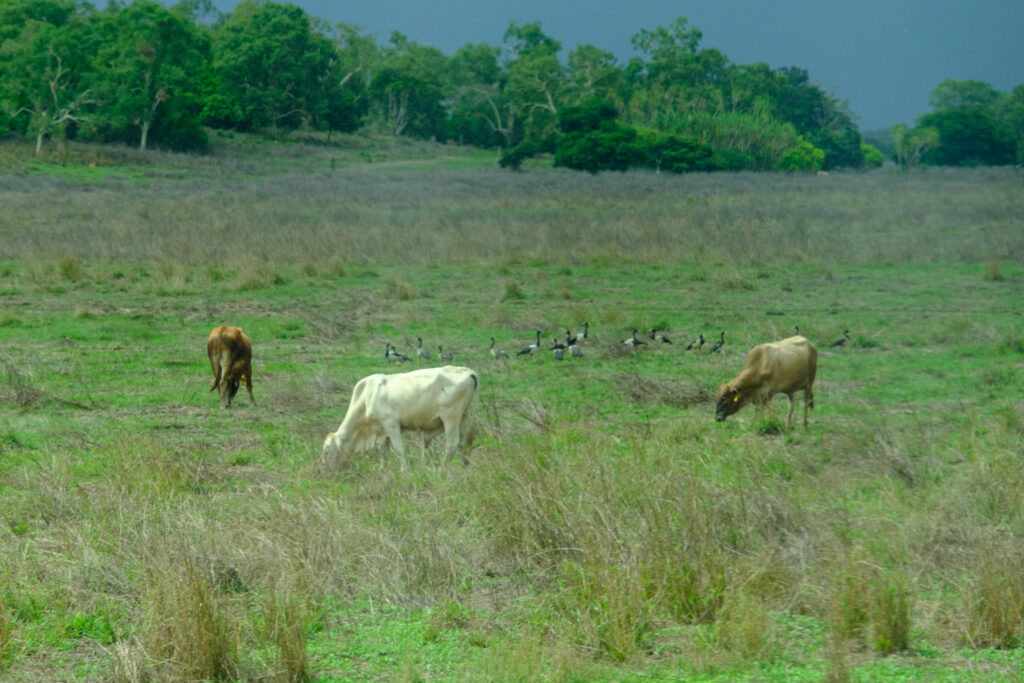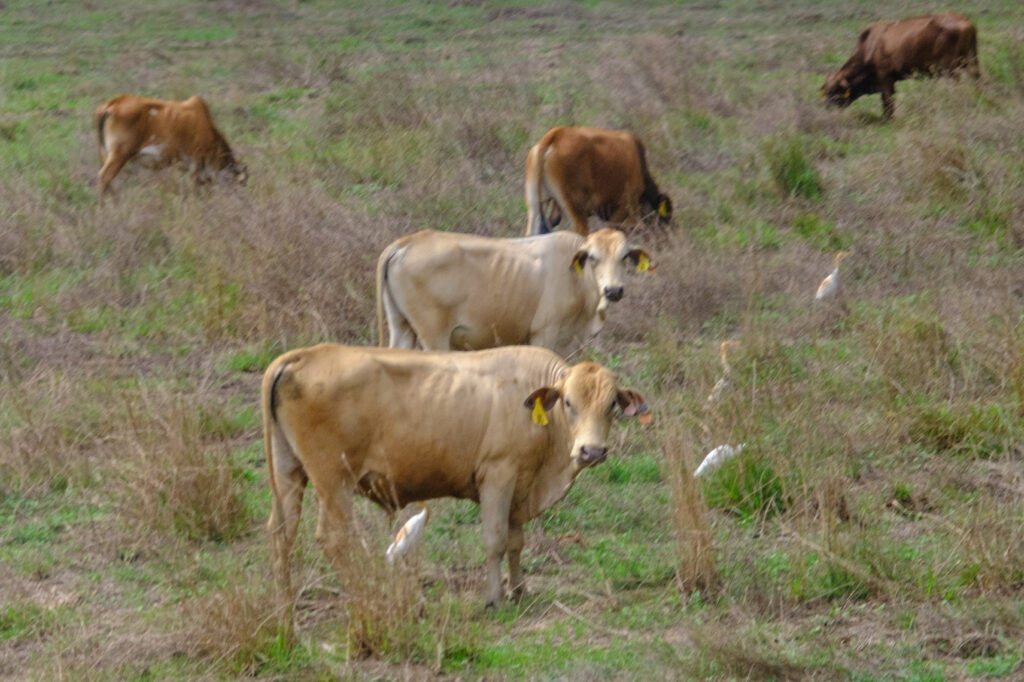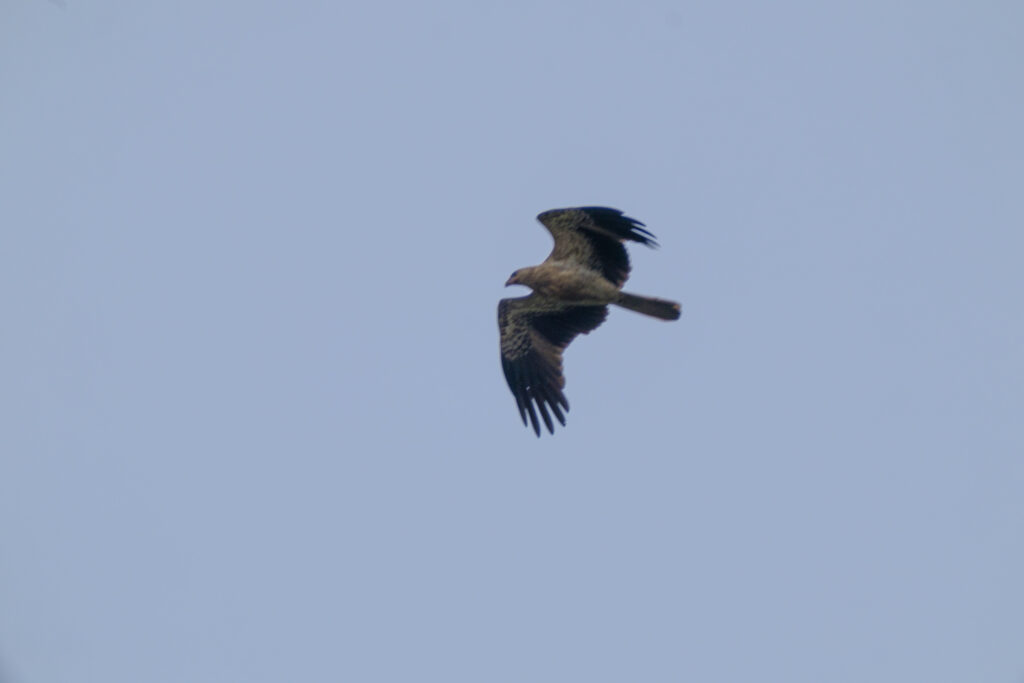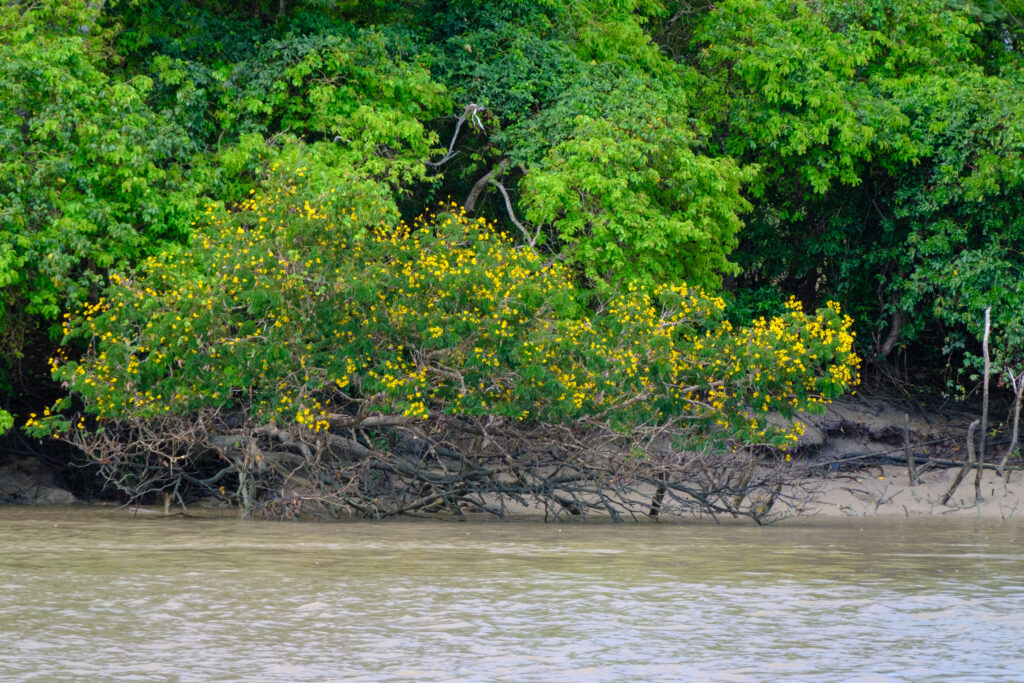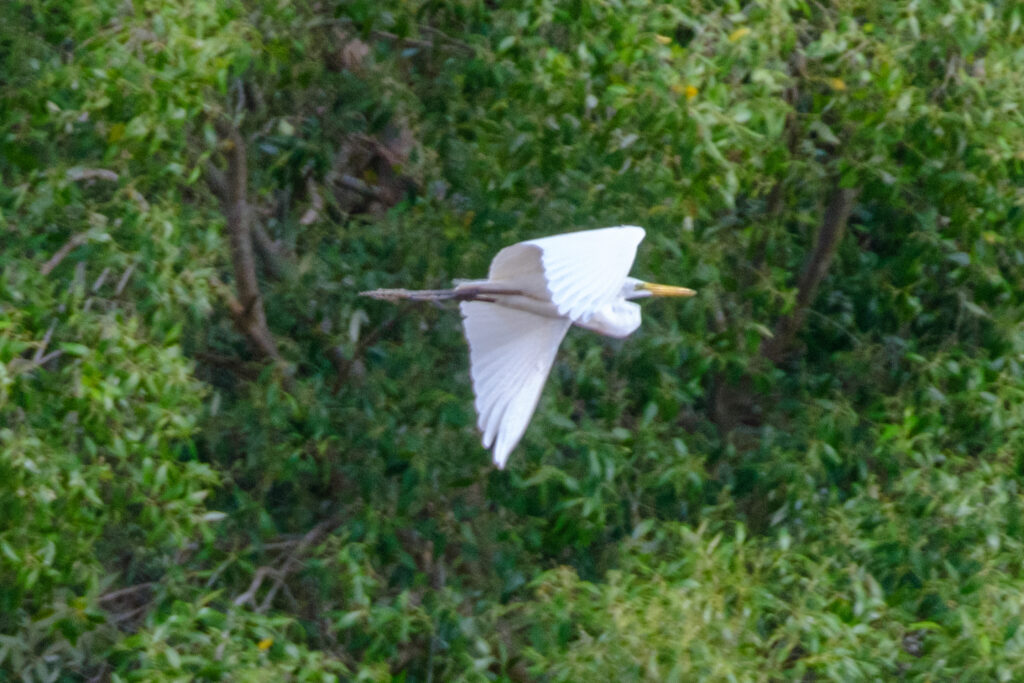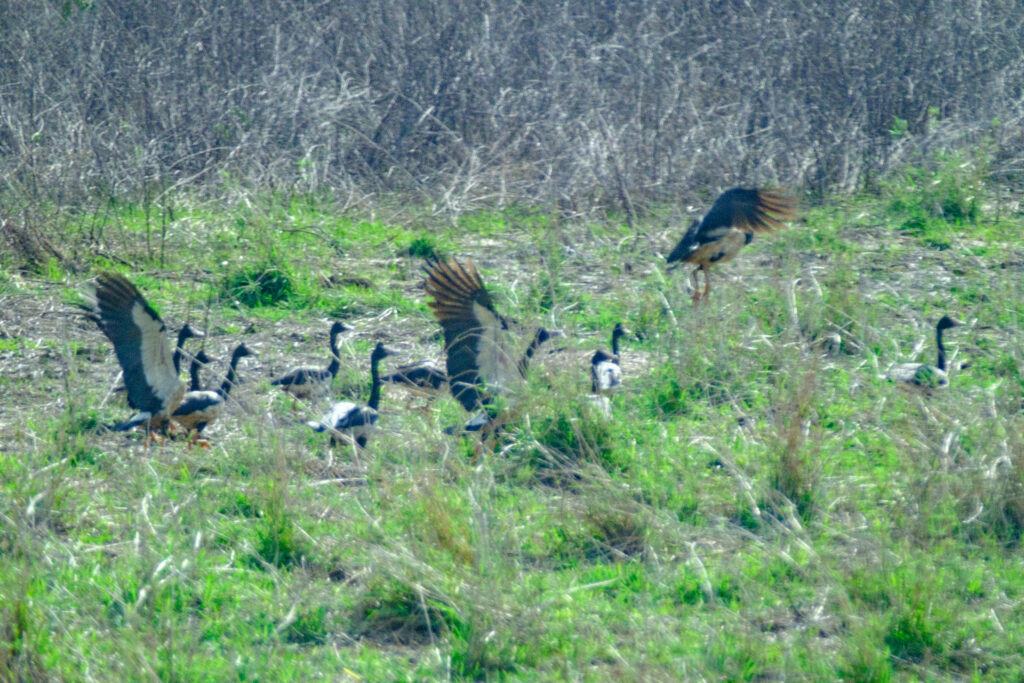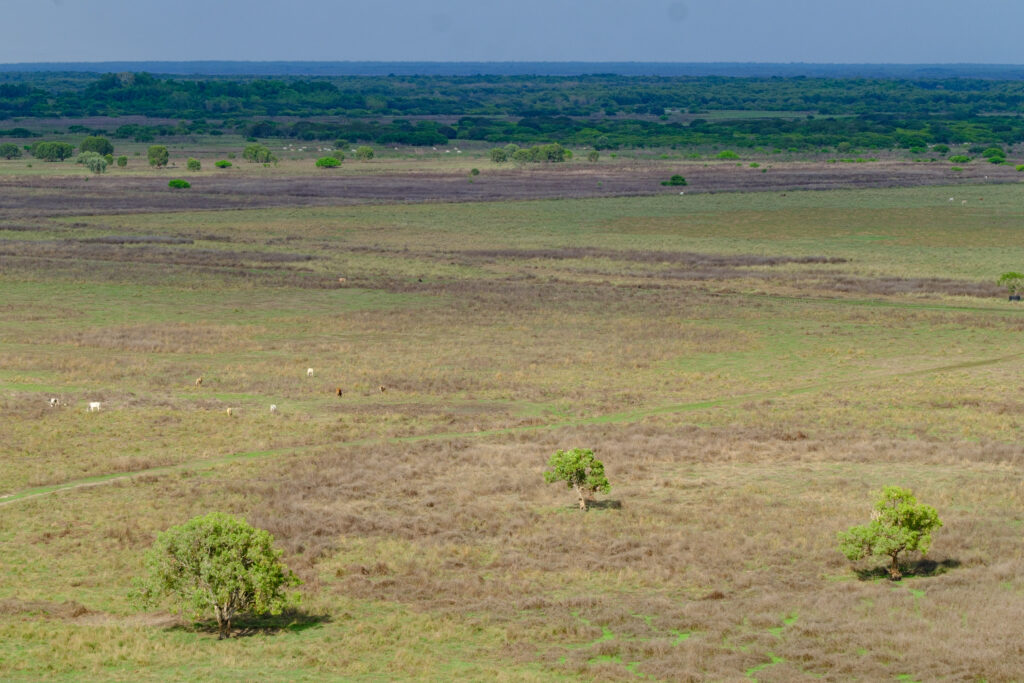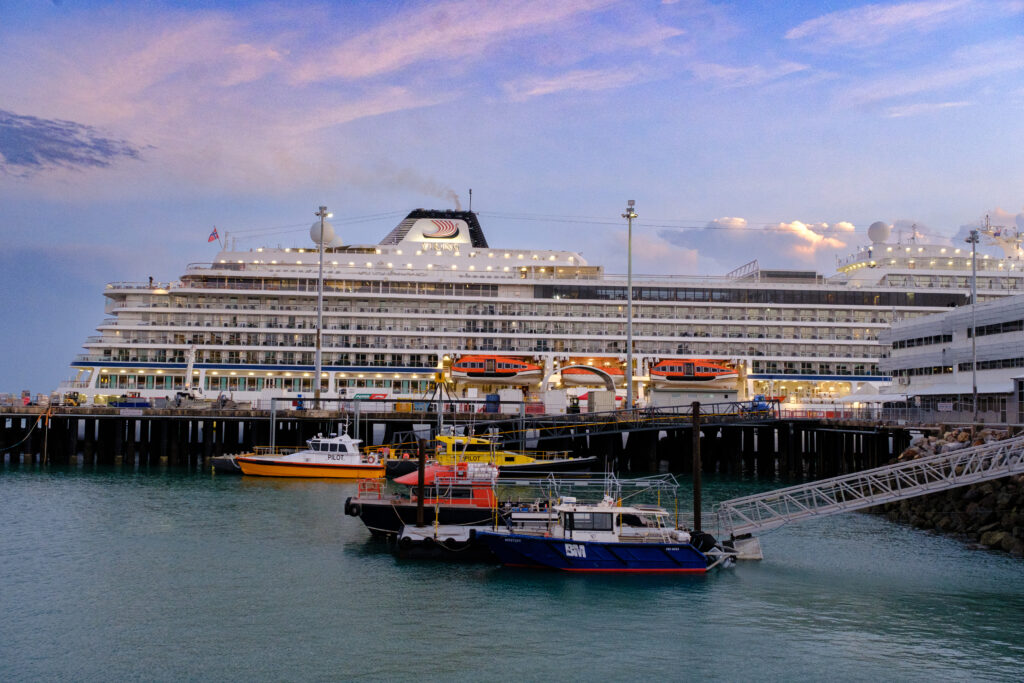For 50 years, Judy and I have had turkey for Thanksgiving. We remember days with our parents and siblings, our kids and grandkids, with friends and by ourselves. Would this year, celebrating in Darwin, Australia, end the string? Nope. The Viking folks came through for Year 51 with a turkey dinner with all the fixings, including pumpkin pie for dessert.
Today was also crocodile day. We traveled an hour east of Darwin through the countryside to the Kakadu National Park. The tour was operated by the Spectacular Jumping Crocodile Cruises and lasted about 45 minutes. And indeed, we saw crocodiles. Half a dozen of them.
Now we’ve seen plenty of the crocs’ cousins, alligators, in Florida. Crocodiles are larger and more likely to attack then alligators. The captain of our pontoon craft warned us that crocodiles see pretty much the way we humans do. They are particularly attracted to bright colors, such as the red life jackets the company distributes in the unlikely event that we have to abandon ship in the middle of the croc-infested Adelaide River. When not dining on tourists, crocs, the big ones anyway, have been known to go after water buffalo but are mostly satisfied with 12- to 18-inch fish, which are plentiful and easier to get.
The Adelaide empties into the Arafura Sea and at this point is brackish water. It therefore supports both freshwater and saltwater crocodiles. I’m pretty sure I wouldn’t know the difference and would swim equally hard no matter which was chasing me. Saltwater crocs actually prefer freshwater. Go figure.
The tour company’s name is stretching things a bit. Until recently, they would dangle bait from a long pole and cause the crocs to jump a number of feet out of the water, thereby earning the “spectacular jumping” part of the claim. Animal rights types stopped that practice so all we saw was crocs floating like dead logs in the gently flowing river. Friends on board saw the bait trick being pulled right in town so the animal rights people haven’t been everywhere yet. But we got bragging rights. I shot some bird and landscape scenery shots too.
Upon our return to Darwin, Judy and I elected to be dropped off in the Central Business District for a brief walk. We went down a pedestrian shopping street (it was 6 PM and the shops were all closed), through the Bicentennial Park, by the Darwin Cenotaph Memorial, by the Northern Territory Parliament Building and the territory’s Administrator’s house, to Christ Church where a youth choir was performing and back to the ship for the aforementioned turkey feed.
Our guide on the bus, and the lecturers here on board, were quite helpful in understanding the Northern Territory. Australia is divided into six states and a number of territories. The Northern Territory is big enough to be a state, but it’s never been given that status. It’s the second biggest in terms of land area but its population of 250,000 is only half of the smallest state (Tasmania).
Darwin was founded in 1869, quite late in the history of European Australia, which dates back to Captain Cook in 1770 and the first penal settlement at Botany Bay (Sydney) in 1788. Its development has been influenced by three main events (in my simplistic and probably flawed view of things):
- The gold rush of 1872, which spurred development of Darwin.
- World War II and in particular the repeated bombing of Darwin beginning on February 19, 1942. It was carried out shortly after Pearl Harbor by four aircraft carriers that attacked Hawaii on December 7, 1941. The Japanese, rightfully, saw Darwin as a key supply point for the American forces in the Pacific. Many citizens were killed and many others left town permanently.
- Cyclone Tracy in 1974, which caused damage to 80% of the town’s structures and killed 71 citizens. Again, many people left town permanently.
Today, the city appears to be quite modern and thriving, although looks can be deceiving. The Parliament building is, in particular, quite impressive and is undergoing expansion. Tourism is a significant contributor to the town’s economy. Cattle grazing and mining are important as are the military and public works projects.
Darwin is the northern terminus of the Stuart Highway, which runs 3,000 km (1,800 miles) from Adelaide in the south, through Alice Springs in the middle (we’ll be there in a week or two) to Darwin. Darwin is a port city for goods flowing from Indonesia and Southeast Asia. It was built as part of the WWII war effort. The Northern Territory extends to just south of Alice Springs.
We’ll learn more when we visit the town’s museum tomorrow. We sail around 1 PM, just in time for a Backgammon game (the software has been fixed; I won a game this morning) and our afternoon nap before teatime and dinner.




